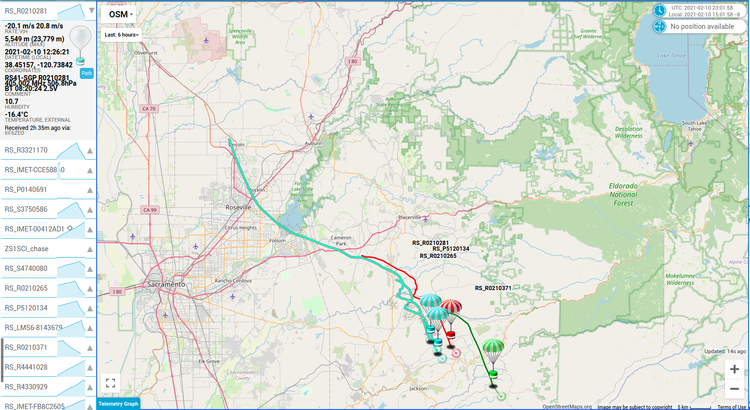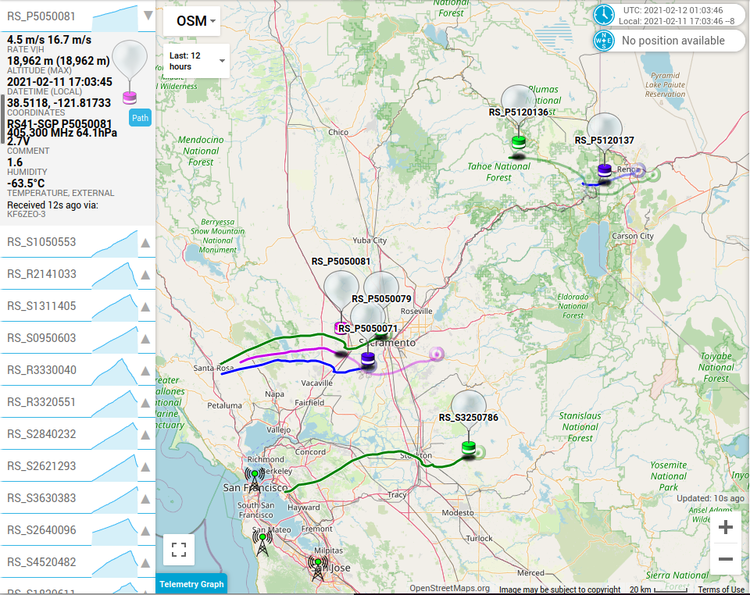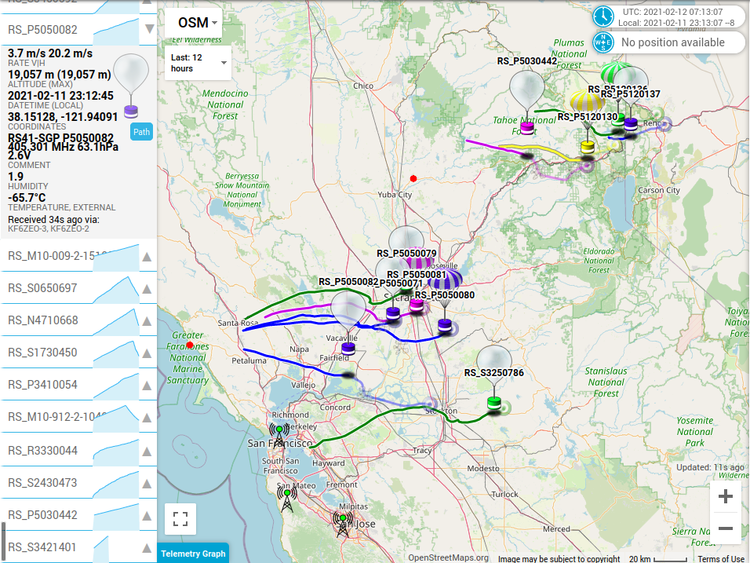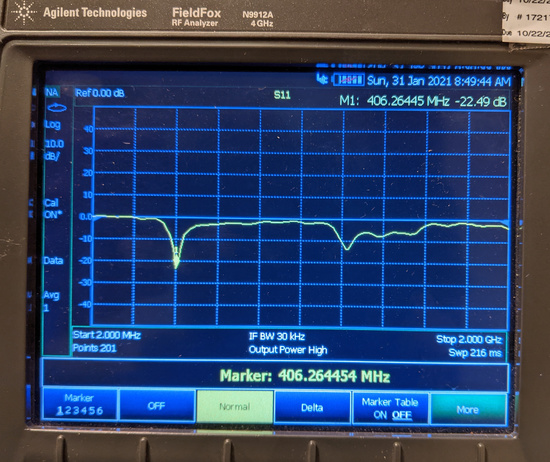I recently installed a new antenna (see below), and checking SondeHub a few hours later I noticed a bunch of balloons west of Sacramento. Well, that's pretty interesting. There aren't any regular launches near Sacramento, so this must be something special. They seemed to be launched frequently, because when I stopped receiving one balloon I immediately start receiving the next.
These balloons were far away! I guess this new antenna works a lot better than the old one. Trying to back out the launch location, it seemed like they were being launched from Beale AFB, which is directly east of Yuba City. Maybe a military project? The military does launch a lot of radiosondes, but those are usually in Arizona in support of Aerostats patrolling the border.
The program I use to decode radiosondes, radiosonde_auto_rx, supports multiple receivers, so I stole a RTL-SDR from my AIS station and continued receiving. The next day I saw radiosondes above Santa Rosa as well.
Where were all these coming from? Using the telemetry I was directly receiving from the balloons, and the low-level winds from the Oakland Airport radiosondes, I calculated the second launch site to be near Bodega Bay. I called the Coast Guard station there, but the nice person who answered the phone had no idea what I was talking about.
Atmospheric Rivers
A quick Google search later, I came across an article from February 2017 in the Santa Rosa Press Democrat (PDF) about these launches. The article is well written and goes into detail about how UC San Diego Scripps Institution of Oceanography launches them to look at water content in atmospheric rivers.
Most rainfall and snowfall in California occur during two or three major storms in winter, so looking closely at these storms gives researchers a better idea of how much water California will have for the rest of the year. Is there enough water for all the cities and farms? More water is always better, but more water leads to more plant growth, which means more fuel for wildfires in the fall.
Another more recent article, from Yubanet (PDF) in December 2019, describes how the research project had recently expanded to include launches from Yuba City in the Central Valley. These were the balloons I thought were launching from Beale AFB.
A tweet from Mark Tamayo in January 2021 showed that UCSD was still launching from Bodega Bay:
A full day of Atmospheric River research. This was another balloon launch from Bodega Bay @CW3E_Scripps pic.twitter.com/5Eok1MyhZq
— Mark Tamayo (@MarkTamayoKTVU) January 27, 2021
Emailing the UCSD researchers confirmed that they were launching the radiosondes from the UC Davis Bodega Marine Reserve. The schedule is to launch radiosondes every three hours during atmospheric river events. They would like to launch radiosondes more frequently during these events, but they only have one receiver at each launch location. Now that seems like an easy problem to solve!
The red dots in the image above show the two launch locations. As you can see, I don't start receiving the balloons until they are far away from the launch site, because of mountains blocking the signal to my station in San Francisco. I start receiving the Bodega Bay radiosondes once they rise above approximately 10k meters, and the Yuba City radiosondes above ~14k meters. In this screenshot, you can also see the regular Oakland airport launch, which I do receive from the launch site because there are no mountains in the way.
For this atmospheric river event from Feb 10-12, 2021, I received 14 radiosondes. In the short term, I'll continue with two receivers at my station in San Francisco, so I can see all their balloons during atmospheric river events. Once the rain stops, I'll probably use the second receiver for other RF projects.
New Antenna
The new antenna I built that allowed me to see these atmospheric river balloons is a handmade 1/4 wave ground plane antenna. I wanted a new antenna after seeing how poorly the Diamond X-50NA antenna I was using performs at 400 MHz.
A 1/4 wave ground plane antenna is super easy to make, all you need is a bulkhead solder RF connector and some copper wire. To make it even easier, I decided to just lengthen the 1680 MHz antenna that I used out at Oakland airport. You can see the lap solder joints where I just extended the elements. The clear goop at the base of the driven element is hot glue to keep water from leaking thru the bulkhead connector into the coax, because solder bulkhead connectors are not waterproof on the solder side.
Sweeping the antenna, the 22 dB null is at 406 MHz, which corresponds to a SWR of 1.1:1, which is pretty good! You can also see the 3rd harmonic at around 1.22 GHz, and maybe this will work for the 1240 MHz amateur band?
To see how this antenna compares to my Los Gatos station, I'll do another antenna performance blog post after I gather a few months of data.




